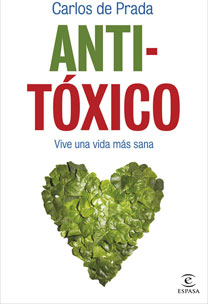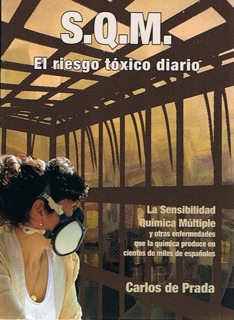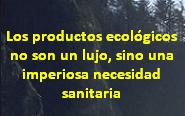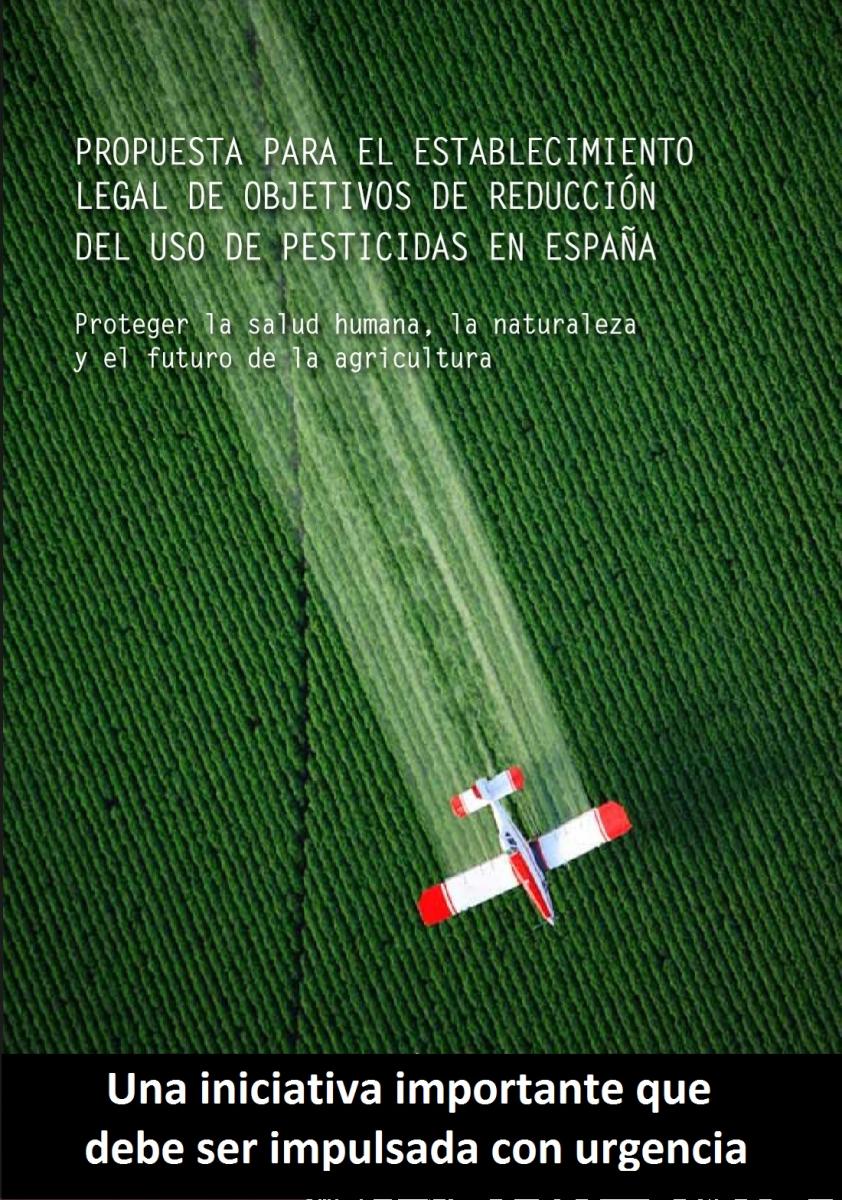Importantes científicos apoyan un llamamiento para reducir la exposición al Bisfenol A, ante el inminente Dictamen de la Agencia Europea de Seguridad Alimentaria
Bruselas, 23 de junio 2010
Importantes científicos apoyan un llamamiento para reducir la exposición al Bisfenol A, ante el inminente Dictamen de la Agencia Europea de Seguridad Alimentaria

La Alianza de Salud y Medio Ambiente (HEAL) ha apoyado una carta dirigida a la Autoridad Europea de Seguridad Alimentaria (EFSA), en la que se pide la reducción de la exposición humana a una de las sustancias químicas sintéticas que más preocupa, el bisfenol A (BPA). (1)
La carta ha sido suscrita por profesores universitarios y científicos de EE.UU., Francia, Alemania, Italia, España, Suiza y el Reino Unido y por más de 40 grupos de salud internacionales y nacionales. Apoyan que en el examen que se está realizando sobre esta sustancia y los niveles de ella a los que debemos vernos expuesto o no, se tengan en cuenta numerosas investigaciones realizadas en base a los criterios más exigentes, y no como, en buena medida, ha sucedido hasta ahora. A principios de julio de 2010 se emitirá un dictámen sobre esta sustancia.
El dictamen de la EFSA se ha retrasado, según esta Agencia, para tener en cuenta "cientos de estudios" y la "más reciente literatura científica", según el sitio web de la EFSA. (2)
En la carta abierta de científicos y organizaciones no gubernamentales, dice que "sólo una pequeña minoría de los estudios que han articulado la exposición de BPA es seguro” pero que, inexplicablemente, la EFSA ha tenido más en cuenta hasta ahora estos pocos estudios realizados con metodologia frecuentemente cuestionable, para declarar “seguro" el BPA.
Genon Jensen, Director de la Alianza para la salud y el Medio Ambiente, considera que debería realizarse una profunda revisión que tuviese en cuenta lo que la ciencia sabe hoy para que se realizase un dictamen adecuado que garantizase la protección de la salud. "Se sospecha que el BPA tiene un papel importante en enfermedades como el cáncer de mama y la diabetes, y es necesario reducir los niveles de exposición humana. Esto es especialmente cierto para el desarrollo del feto en el útero, que es vulnerable debido a BPA puede atravesar la placenta.
Grupos dedicados a la prevención del cáncer en el Reino Unido y Francia, tales como Breast Cancer UK and the French League Against Cancer, también piden que la prohibición de BPA .
Los reguladores de los EE.UU. y Canadá, y algunos estados miembros de la UE, como Dinamarca y Francia, han tomado ya medidas para reducir la exposición a BPA. Otros países son críticos de la posición actual de la UE. A principios de este mes, las autoridades alemanas, dijeron que aunque había una falta de datos sobre algunos aspectos de bisfenol A, lo que existe debe ser suficiente para tomar decisiones sobre la aplicación del principio de precaución. (3)
SANAR cree que la UE debería tomar la iniciativa en el establecimiento de normas de precaución para materiales en contacto con los alimentos para evitar las contradicciones y la duplicación de esfuerzos asociados a cada Estado miembro por separado.
Si el dictamen de la EFSA a principios de julio reconoce que el BPA es dañino, y por lo tanto recomienda una reducción de ingesta diaria tolerable (TDI), esto conducirá a una reducción o eliminación de la cantidad de BPA que se pueden utilizar en materiales en contacto con alimentos, tales como biberones, botellas de agua potable y el revestimiento de latas que contienen los alimentos y bebidas. En última instancia, esto ayudará a reducir la exposición humana a esta sustancia química.
FUENTE (A TRAVÉS DE MIQUEL PORTA): HEAL
La lista de firmantes, en la que se incluyeen algunos importantes científicos españoles (como Nadal, Porta y Olea por ejemplo) es:
Benson Akingbemi, Associate Professor, Department of Anatomy, Physiology and Pharmacology, Auburn University, Auburn, USA.
Prof. Dr. Ibrahim Chahoud, Institute of Clinical Pharmacology and Toxicology, Dept. of Toxicology, Charité - Universitätsmedizin Berlin
André Cicolella, Dipl Eng chemist-toxicologist.
Prof. Patricia Hunt, Meyer Distinguished Professor, School of Molecular Biosciences, Washington State University
Prof. Maricel V. Maffini. Ph.D. Research Assistant Professor. Department of Anatomy and Cellular Biology, Tufts University School of Medicine
Jane Muncke, Ph.D, Environmental Toxicologist, Emhart Glass SA, Switzerland.
John Peterson Myers, Ph.D., Chief Scientist, Environmental Health Sciences, Charlottesville VA.
Angel Nadal, PhD, Professor of Physiology, Instituto de Bioingeniería and CIBERDEM, Universidad Miguel Hernández de Elche, Spain.
Dr John Newby, Medical Information Scientist for the Cancer Prevention Society, Faculty of Medicine, University of Liverpool.
Prof. Jörg Oehlmann, Goethe University Frankfurt am Main, Institute for Ecology, Evolution and Diversity.
Prof. Nicolas Olea, MD, University of Granada, University Hospital.
Prof. Miquel Porta, IMIM and Universitat Autònoma de Barcelona, Spain.
Prof. Gail S. Prins, PhD, Professor of Physiology, Department of Urology, University of Illinois at Chicago.
Prof. Fredrick vom Saal, Curators Professor of Biological Sciences, University of Missouri-Columbia.
Prof. Pietro Giulio Signorile, President of the Italian Endometriosis Foundation.
Prof. Carlos Sonnenschein, MD, Department of Anatomy and Cellular Biology, Tufts University, School of Medicine.
Prof. Ana M Soto, MD, Department of Anatomy and Cell Biology, Tufts University, School of Medicine.
Prof. Hugh S. Taylor, M.D., Professor of Molecular, Cellular and Developmental Biology, Yale University.
Laura N. Vandenberg, PhD, Postdoctoral Fellow, Center for Regenerative and Developmental Biology, Tufts University.
Prof. Cheryl S. Watson, PhD, Professor, Biochemistry & Molecular Biology Dept. University of Texas, Medical Branch, Galveston.
Prof. Andrew Watterson, Occupational and Environmental Health Research Group, University of Stirling.
Prof. R. Thomas Zoeller, Biology Department, Morrill Science Center, University of Massachusetts.
~
Action for Breast Cancer, Malta
Alliance for Cancer Prevention, UK
Arnika, Czech Republic
Association for Environmental and Chronic Toxic Injury, Italy
Austrian section of ISDE (International Society of Doctors for the Environment), Austria
Breast Cancer Fund, USA
Breast Cancer UK, UK
BUND / Friends of the Earth Germany, Germany
Cancer Prevention and Education Society, UK
ChemSec –International Chemical Secretariat, International
CHEM Trust, UK
Chemical Sensitivity Network, Germany
Clean Air Action Group, Hungary
Comité pour le Développement Durable en Santé, France
Danish Consumer Council, Denmark
The Danish Ecological Council, Denmark
Eco-Accord Program on Chemical Safety, Eastern Europe, Caucasus and Central Asia
EcoAid, Germany
Ecologistas en Acción, Spain
Environmental Health Fund, USA
Environment Illinois, USA
European Environmental Bureau, EU
Finnish Association for Nature Conservation, Finland
Friends of the Earth Spain, Spain
Global 2000 / Friends of the Earth Austria, Austria
Health and Environmental Network, Europe
Health Care Without Harm, International
Indiana Toxics Action, USA
Instituto Sindical de Trabajo Ambiente y Salud, Spain
The Irish Doctors' Environmental Association, Ireland
Italian Endometriosis Foundation, Italy
Plastic Planet, Austria
Rachel's Friends Breast Cancer Coalition, USA
Réseau Environnement Santé, France
Society for Sustainable Living, Czech Republic
Unison, UK
VHUE e.V., Germany
Women in Europe for a Common Future, Europe
Women’s Environmental Network, Scotland
Women's Voices for the Earth, USA
WWF European Policy Office, Europe
1. Open Letter and associated press release available from Diana@env-health.org (embargoed until 23 June at 12.00)
2. EFSA statement on their website: http://www.efsa.europa.eu/en/ceftopics/topic/bisphenol.htm
To give the European Commission an up-to-date overview of the safety of BPA, EFSA will now deliver a scientific opinion in early July rather than end of May. This is due to the need for the Panel to consider hundreds of studies in its review and analysis of the most recent scientific literature. The opinion will also include the review of the Stump study on the possible neurodevelopmental effects of BPA and the review of the scientific arguments provided by Denmark in support of the Danish government’s recent decision to ban the substance in food contact ma terials for infants.
3. German Federal Environmental Agency report and press statement on BPA available at http://www.umweltbundesamt.de/uba-info-presse-e/2010/pe10-033_bisphenol_...
Chemical Health Monitor is an initiative of the Health and Environment Alliance (www.env-health.org). The project’s website is in development at www.chemicalshealthmonitor.org
The Health and Environment Alliance aims to raise awareness of how environmental protection improves health. It achieves this by creating opportunities for better representation of citizens’ and health experts’ perspectives in the environment and health-related European policy-making. Our membership includes a diverse network of more than 60 citizens’, patients’, women’s, health pr ofessionals’ and environmental organisations across Europe and has a strong track record in increasing public and expert engagement in both EU debates and the decision-making process.





































































